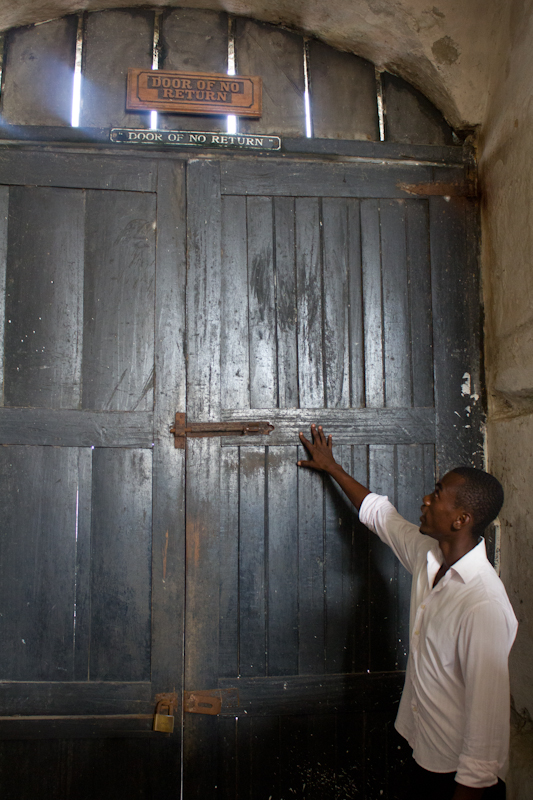
Built by the Portuguese traders between 1482 and 1486, a white-washed Old- fashion Castle on the cost of Ghana is the Elmina Castle. The very first and the largest European building constructed for many centuries. The attractive surroundings with sandy beaches, blue skies, and good tropical palm trees tell a story about how thousands of African slaves ever see as their homeland.
From the city of Cape Coast about 13km (8 miles) along the western coast of Ghana is Elmina Castle or St. George’s Castle. Elmina Castle serves as the first European slave-trading post in sub-Saharan Africa. This makes it one of the oldest European buildings on the continent still in one piece today. The Castle stands white and proud with the shores of the rather wild Atlantic Ocean on one side, and the more placid Benya Lagoon on the other.
Purpose of Building Elmina Castle
 This was built to support Captains of ship by providing their vessels with a secure harbour. The outposts of the castle were heavily armed against assault from the sea, but interestingly, not so much from attacks inland. Elmina Castle was not built for the purpose of holding and trading slaves, it started life as a trading post for gold and other wares. It is thought that the name “Elmina” comes from the Portuguese name for this coast “Da Costa de el Mina de Ouro” (The Coast of Gold Mines).
This was built to support Captains of ship by providing their vessels with a secure harbour. The outposts of the castle were heavily armed against assault from the sea, but interestingly, not so much from attacks inland. Elmina Castle was not built for the purpose of holding and trading slaves, it started life as a trading post for gold and other wares. It is thought that the name “Elmina” comes from the Portuguese name for this coast “Da Costa de el Mina de Ouro” (The Coast of Gold Mines).
One of the rusted cannons still visible today, Elmina Castle, Ghana
The Europeans travellers heard of the riches in West Africa through traders travelling through the area made several unsuccessful journeys to reach Elmina. They were scared of Africa malaria or either unable to pass though the sandy bars of Elmina Castle.
Division in the Elmina Castle
In order to make the most of a visit to Elmina Castle beneficial, it is good to read some history about Elmina Castle before coming to visit. The Castle itself is quite well maintained. The upper story is where the officers lived and worked out of.
Future years of Elmina Castle
About 30,000 slaves yearly passed through Elmina Castle until 1814 when the Dutch slave trade was abolished. Around 1872 the British really use Elmina Castle until 1957 when Ghana gain independence from the Britain. It was after this period it became a training centre for Ghana Police recruits and even a school just for a short period, before being converted into a historical museum.
Through the protection of gold trade, the Elmina castle later developed as a point on the infamous slave triangle transporting human cargo to America and the Caribbean, and raw materials, which are cotton and rubber to Britain and manufactured goods like clothing’s and arm weapons back to the West Coast of Africa.
Condition of Slaves
The days of the slave trade may be long gone, but the interior of the castle is still a haunting reminder of the past.
Not knowing what awaited them on the slave ships, those who made it to Elmina Castle were held captives in the castle’s dungeons and subjected to all kinds of indignities, torture and humiliation. The dark, airless dungeons in the basements were oppressive and received sunlight from only two tiny windows.
Before traveling through the infamous Middle Passage, slaves were brought to the coast, and held in fortifications such as Elmina Castle. Up to a thousand slaves could be kept in the dungeons. Conditions were appalling, with 200 slaves in one room, and no space to lie down. The floor was littered with human waste, making it now several inches higher than it was when originally built. Many became ill with malaria and yellow fever.
Conditions did not improve for the slaves that survived to pass through the “Door of No Return,” which led the slaves to the ships that would transport them to the Americas. An estimated fifteen percent of slaves died on the journey of malnutrition and disease.
Those that reached the Americas faced a life of slavery, most often on plantations. While many came to the United States, many more were shipped to the Caribbean and South America. Yet almost all began their journeys in the slave’s castles on the Ghanaian coast.
Getting to Elmina Castle
The Elmina Castle can be reached by car or bus from Accra, the capital city of Ghana. This Castles have been preserved as historical sites, having been named a UNESCO World Heritage Site. Visitors now come from all over the world to visit these historic sites, and to pay their respects to the many people who were taken from their homelands and forced to serve as slaves throughout the New World.
Account from Jean Barbot who visited Elmina Castle in 1682 has this to say
“This castle has justly become famous for beauty and strength, having no equal on all the coasts of Guinea. Built square with very high walls of dark brown stone so very firm that it may be said to be cannon-proof. On the land side, it has two canals always furnished with rain or fresh water sufficient for the use of the garrison and ships-canals cut in the rock by the Portuguese (by blowing up the rock little by little with gun powder ). The warehouses either for goods or provisions are very largely and stately always well furnished.”
By Sheila Williams

























